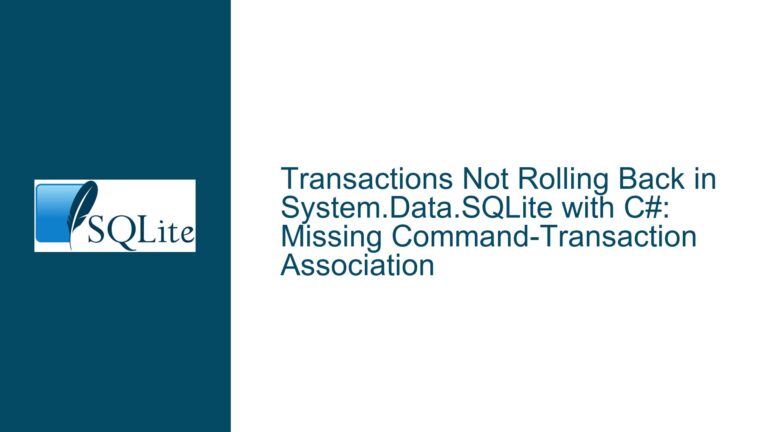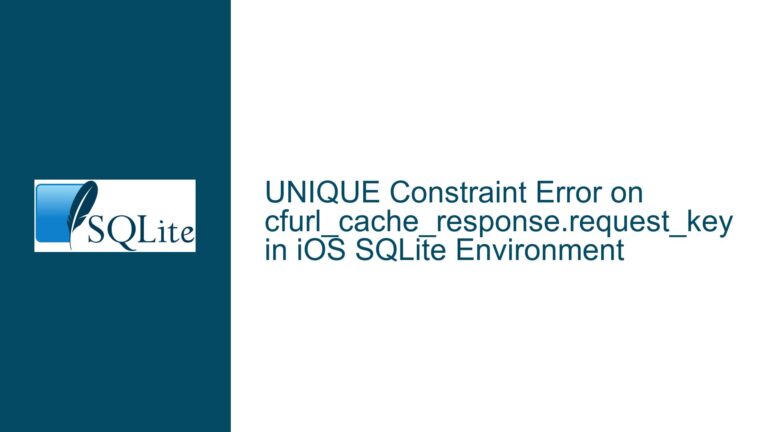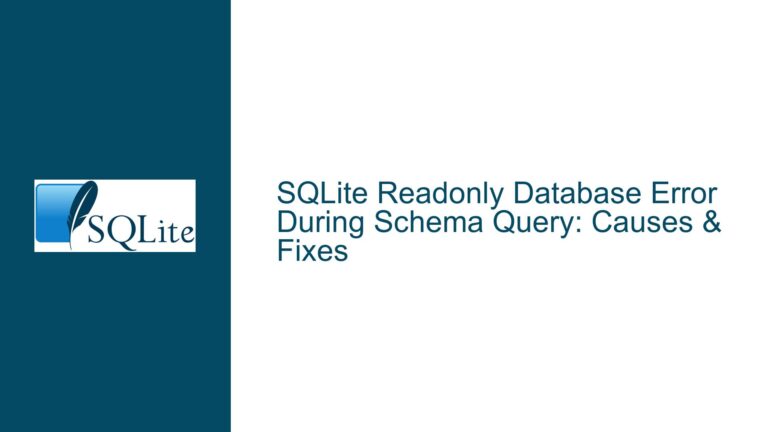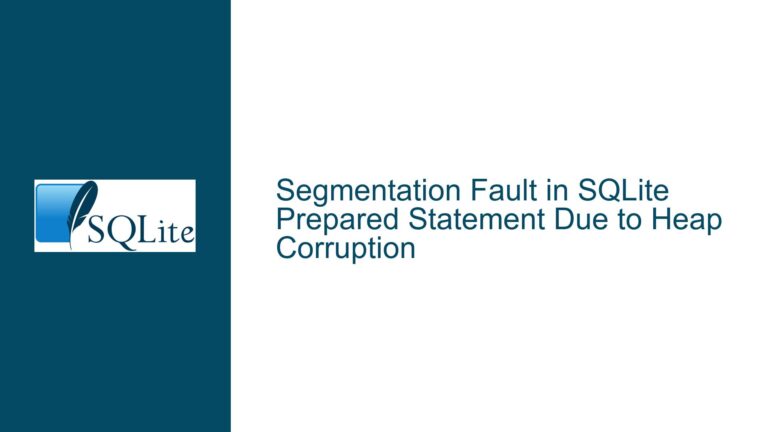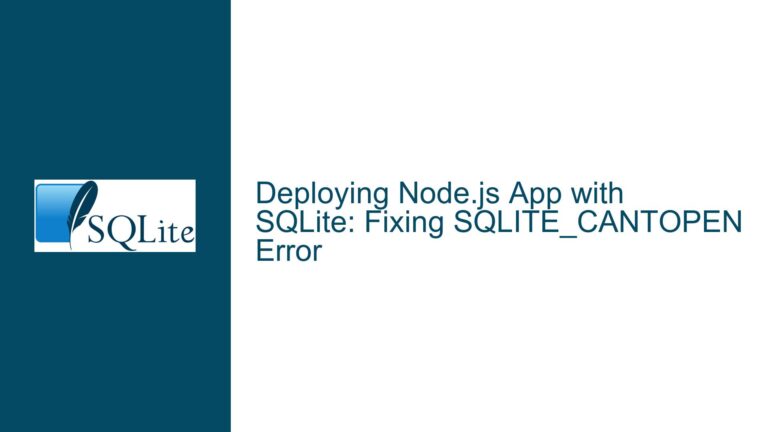Passing Batch File Output to SQLite CLI on Windows
Executing SQL Statements from Batch Files in SQLite CLI
The core issue revolves around executing SQL statements generated by a Windows batch file directly within the SQLite Command Line Interface (CLI) without intermediate steps like writing to a file or manual copy-pasting. The batch file constructs a dynamic SQL query, such as SELECT * FROM [tblSalesRevenue] ORDER BY RANDOM() LIMIT 10;, which needs to be executed in the SQLite environment. The challenge lies in seamlessly passing the output of the batch file to the SQLite CLI for execution.
The batch file in question contains a single line: echo SELECT * FROM [%1] ORDER BY RANDOM() LIMIT %2;. When executed, it correctly generates the SQL statement, but the problem arises when attempting to feed this output directly into the SQLite CLI. The initial approach involves using the .shell command in SQLite, which runs the batch file but does not execute the generated SQL statement. Instead, it merely displays the SQL statement as output, leaving the user to manually execute it.
The solution proposed involves using the .read command with a specific syntax to pipe the output of the batch file directly into the SQLite CLI. However, this approach requires a patch to the SQLite source code, which introduces the ability for the .read command to accept input from a pipeline. This patch is not yet available in the pre-compiled binaries, necessitating either a manual compilation of the SQLite source code or waiting for the next official release.
Patch Requirement and Syntax Errors in .read Command
The primary cause of the issue is the lack of native support in the SQLite CLI for directly executing the output of external scripts or batch files. The .shell command can execute external commands but does not capture their output for execution within SQLite. This limitation necessitates a patch to the SQLite source code, which modifies the .read command to accept input from a pipeline.
The patch, referenced by the SQLite development team, enables the .read command to interpret the output of a batch file as SQL commands. However, applying this patch requires recompiling the SQLite executable from the latest source code, which may be beyond the technical reach of some users. Additionally, the syntax for using the .read command with a pipeline is specific and requires precise quoting to avoid errors.
In the provided discussion, the user encounters a syntax error when attempting to use the .read command with the patched SQLite executable. The error message, Error: near line 2: near "E": syntax error, suggests that the SQLite CLI is interpreting part of the batch file output as invalid SQL. This could be due to improper formatting or additional characters being introduced by the batch file execution.
Implementing the .read Command with Proper Quoting and Compilation
To resolve the issue, users must follow a series of steps to ensure the batch file output is correctly passed to the SQLite CLI. The first step is to obtain or compile a version of the SQLite executable that includes the necessary patch. This can be done by downloading the latest source code from the SQLite Fossil repository and applying the patch manually, or by using a pre-compiled binary provided by the community.
Once the patched SQLite executable is available, the next step is to use the .read command with the correct syntax. The command should be formatted as follows: .read '| "D:/SQLite32/SCRIPTS/Techniques/N Random Records.BAT" tblSalesRevenue 10'. Note the use of single quotes to encapsulate the entire command and double quotes around the batch file path to handle spaces in the file name. The pipe character (|) at the beginning of the command indicates that the output of the batch file should be treated as input to the .read command.
If the user encounters syntax errors, they should verify that the batch file output is clean and does not contain any extraneous characters or lines. The batch file should only output the SQL statement without any additional text or formatting. For example, the batch file should not include any echo commands that output unnecessary information.
For users who prefer not to compile the SQLite source code themselves, pre-compiled binaries with the patch applied are available. These binaries can be downloaded and used directly, provided they match the user’s system architecture (32-bit or 64-bit). The discussion includes links to both 32-bit and 64-bit versions of the patched SQLite executable, along with instructions for their use.
In summary, the issue of executing SQL statements generated by a batch file in the SQLite CLI can be resolved by applying a specific patch to the SQLite source code and using the .read command with the correct syntax. Users must ensure that the batch file output is clean and properly formatted to avoid syntax errors. By following these steps, users can seamlessly integrate batch file output into their SQLite workflows, enhancing automation and efficiency.

